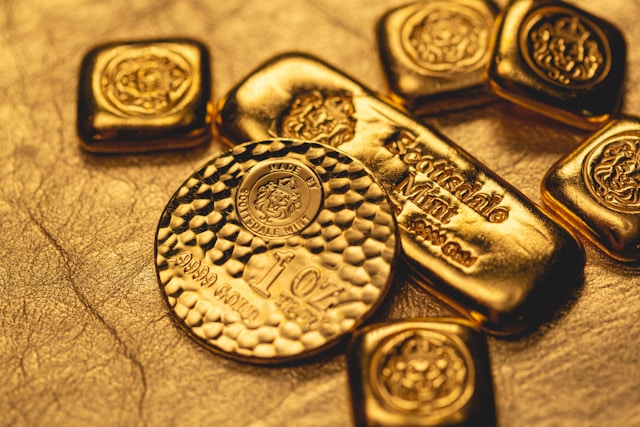Gold is on the cusp of powering through the $2700 an ounce level amid growing bets that the US Federal Reserve will carry out another rate cut next month. US consumer prices are rising slightly more than expected, with the annual increase in inflation being the smallest in more than three months, which is the latest economic data supporting rate cuts.
Dollar Weakness Impact
Weakness in the US job market has heightened expectations of further rate cuts as the Fed tries to steer the economy into a soft landing. The growing case of rate cuts is one catalyst fuelling dollar weakness across the board, therefore fuelling higher gold prices in the market.
Gold appears to have found support above the $2600 an ounce level amid growing dollar weakness across the board. With markets pricing an 80% chance of a 25 basis point cut next point, gold should be one of the beneficiaries of the price action.
Geopolitical Tensions
In addition to the rate cut debate, gold’s upward momentum is fuelled by soaring geopolitical tensions in the Middle East. Israel’s invasion of Lebanon is already threatening a full-blown war in the region that could pull in Iran. The heightened geopolitical events are one catalyst fuelling a strong demand for gold as a safe haven and storage of wealth amid the uncertainty.
Gold is renowned for its stability, making it a popular hedge against geopolitical and economic risks. According to the World Gold Council, in September, global physically backed gold exchange-traded funds experienced their fifth consecutive month of inflows, with North America-listed funds contributing to their growth.
The prices of the safe-haven asset have surged by 28% in 2024, marking its most significant annual increase since 2010. This rise can be attributed to investors looking to protect their portfolios against uncertainties exacerbated by extended conflicts in the Middle East and other regions.
Central Bank Gold Repurchases
Nevertheless, interest rate cuts and soaring geopolitical tensions have not been the only factors driving gold prices. Central banks across the globe resorting to precious metals to strengthen their foreign reserves have also played a significant role. For starters, strong buying from India and China triggered a spike in gold above the $2400 an ounce level in the first half of the year.
According to the World Gold Council, the National Bank of Poland (NBP) tied with India as the second-largest gold buyer among central banks in the second quarter of 2024. Earlier this year, Adam Lipinski, the president of the National Bank of Poland, stated that the central bank intended to guarantee that 20% of its reserves were made up of gold. Currently, 14.7% of the NBP’s reserves are made up of gold.
Central banks reported buying 8 tons of gold in August, which was a substantial decrease from the highs of early 2024. Since March, when central banks announced a net sale of 2 tons, the decreased demand is at its lowest point. Additionally, this recent number is significantly lower than the 33-ton 12-month average.
Despite this, demand was still driven by emerging market (EM) central banks, accounting for 70% of all net purchases this year. Turkey remains the biggest buyer among the EM central banks, accounting for 25% of all purchases in 2024. Only four central banks increased their gold reserves by more than one ton in August. The National Bank of Poland took the most important action, buying six tons.
The ability to adequately diversify their reserves to guard against macroeconomic uncertainty and geopolitical shocks is one of the primary reasons central banks have been hoarding more gold in recent years. This is because, regarding economic and geopolitical volatility, gold is seen as a safe haven asset and an inflation hedge when currency and other asset prices may fluctuate.


